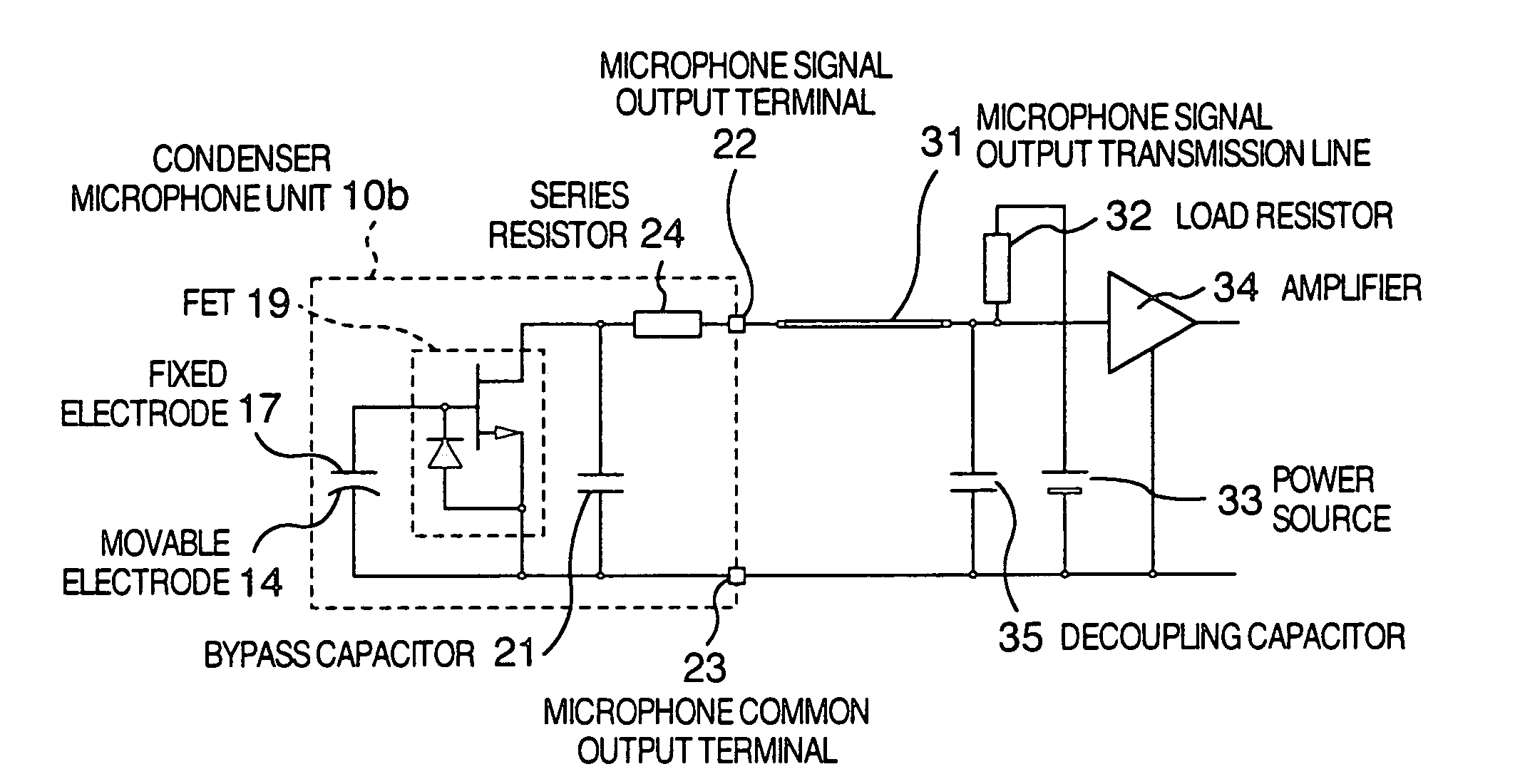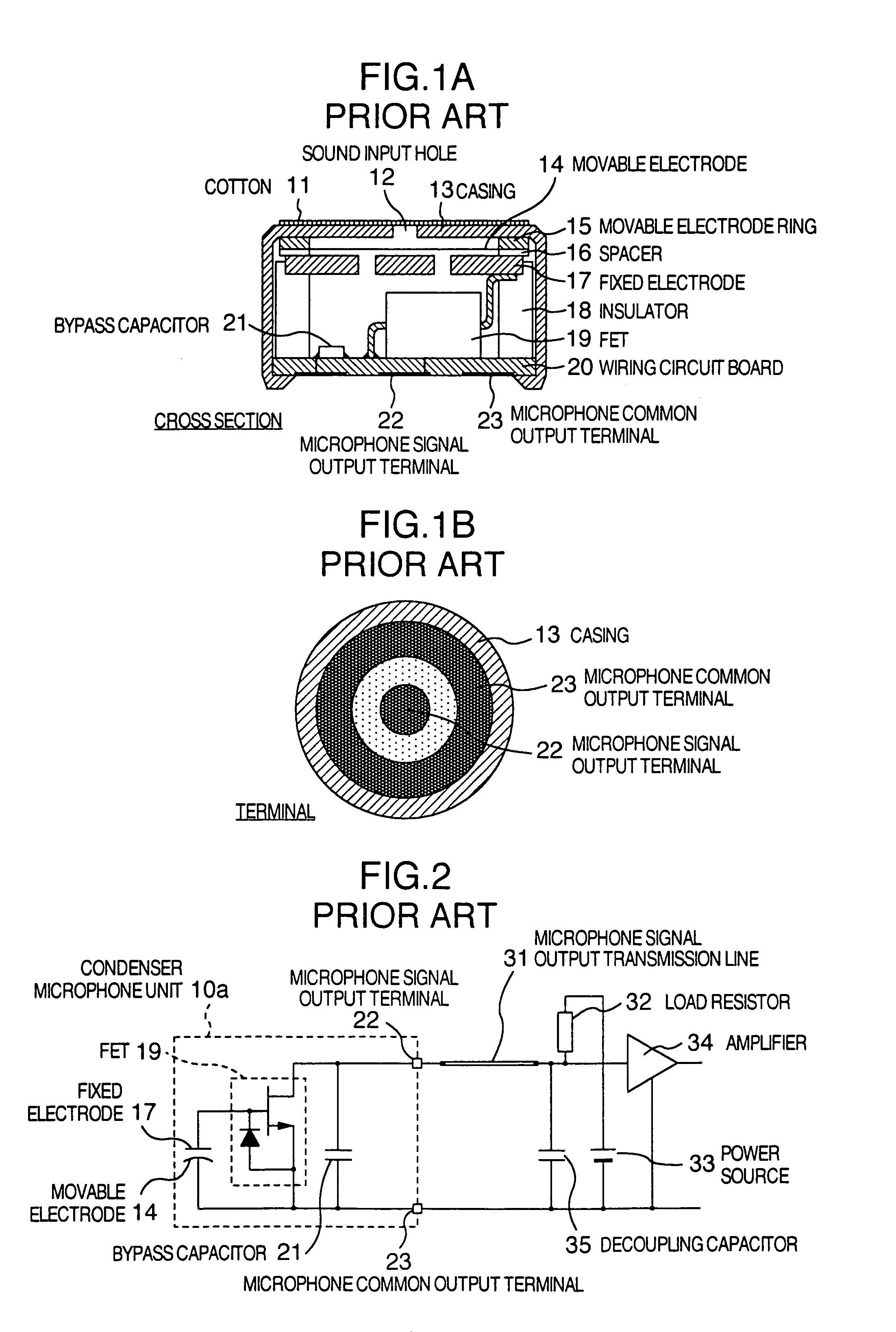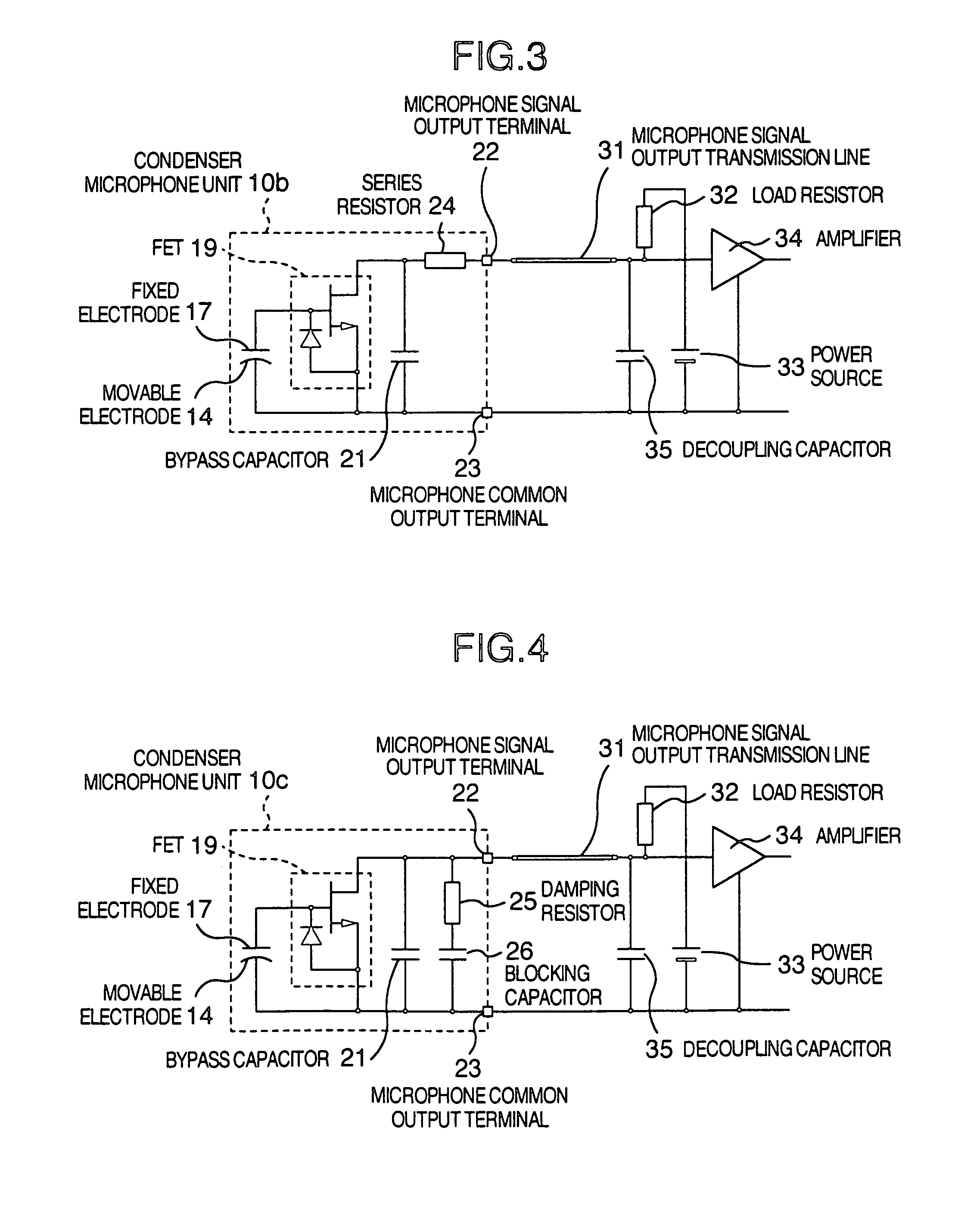Condenser microphone apparatus and its connecting apparatus
a condenser microphone and microphone technology, applied in the direction of transducer details, electrostatic transducer microphones, electrical transducers, etc., can solve the problems of difficult to keep such a frequency low in a wide band, difficult to cope with such a situation, and generate noise, so as to reduce the noise output
- Summary
- Abstract
- Description
- Claims
- Application Information
AI Technical Summary
Benefits of technology
Problems solved by technology
Method used
Image
Examples
first embodiment
[0036]FIG. 3 is a circuit diagram of a condenser microphone apparatus in the first embodiment of the invention. FIG. 3 differs from the circuit diagram of the conventional condenser microphone apparatus shown in FIG. 2 with respect to a point that a series resistor 24 is added. In a condenser microphone unit 10b shown in FIG. 3, the series resistor 24 is inserted to an interval between the drain of the FET 19 and the microphone signal output terminal 22.
[0037]The series resistor 24 is provided to limit a resonance current and arranged in series with a series resonance circuit comprising the microphone signal output transmission line 31 and bypass capacitor 21 in terms of an equivalent circuit of a high frequency. Since an effective series resistance of the bypass capacitor 21 is equal to or less than 1Ω, by setting a resistance of the series resistor 24 to a value within a range from tens of Ω to hundreds of Ω, a resonance current of the microphone signal output transmission line 31...
second embodiment
[0039]FIG. 4 is a circuit diagram of a condenser microphone apparatus in the second embodiment of the invention. FIG. 4 differs from the circuit diagram of the conventional condenser microphone apparatus shown in FIG. 2 with respect to a point that a damping resistor 25 and a blocking capacitor 26 are added. In a condenser microphone unit 10c shown in FIG. 4, the damping resistor 25 and the blocking capacitor 26 for blocking a direct current are serially connected and such a serial circuit is connected in parallel with the drain and source of the FET 19. The damping resistor 25 and blocking capacitor 26 are provided to damp a parallel resonance and arranged in parallel with the parallel resonance circuit comprising the microphone signal output transmission line 31 and bypass capacitor 21 in terms of an equivalent circuit of a high frequency. Since an effective series resistance of the bypass capacitor 21 is equal to or less than 1Ω, an impedance at the time of a parallel resonance o...
third embodiment
[0041]FIG. 5 is a circuit diagram of a conventional condenser microphone unit and a connecting apparatus (connector) in the third embodiment of the invention. In FIG. 5, series resistor 27 is included in a connecting apparatus 40a. Both ends of the series resistor 27 are connected to a connector signal input terminal 41 and a connector signal output terminal 43. The microphone signal output terminal 22 and microphone common output terminal 23 of a condenser microphone unit 10a are connected to the connector signal input terminal 41 and a connector common input terminal 42, respectively. The connector signal output terminal 43 and a connector common output terminal 44 are connected to the microphone signal output transmission line 31 and a common terminal (ground) on a mother board of an apparatus such as a cellular phone or the like, respectively, and construct a condenser microphone apparatus for converting an acoustic signal of the cellular phone or the like into an electric signa...
PUM
 Login to View More
Login to View More Abstract
Description
Claims
Application Information
 Login to View More
Login to View More - R&D
- Intellectual Property
- Life Sciences
- Materials
- Tech Scout
- Unparalleled Data Quality
- Higher Quality Content
- 60% Fewer Hallucinations
Browse by: Latest US Patents, China's latest patents, Technical Efficacy Thesaurus, Application Domain, Technology Topic, Popular Technical Reports.
© 2025 PatSnap. All rights reserved.Legal|Privacy policy|Modern Slavery Act Transparency Statement|Sitemap|About US| Contact US: help@patsnap.com



